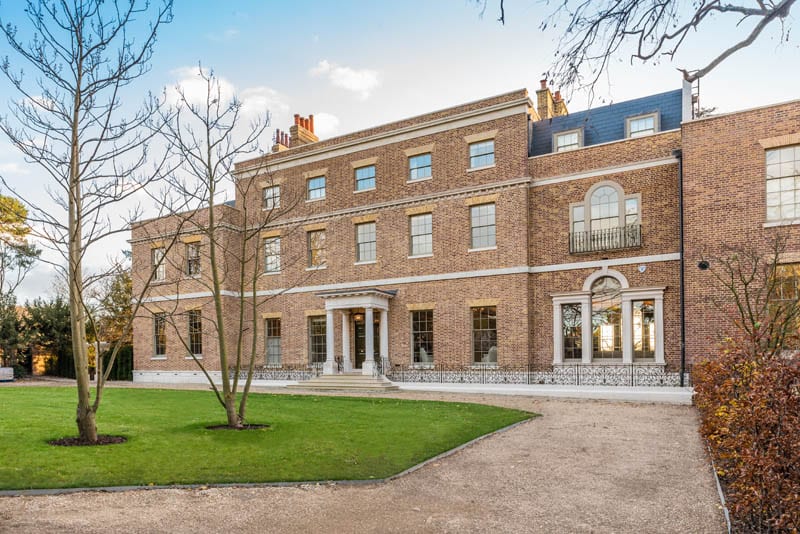From Pilkington Spacia™ to LandVac
At Gowercroft Joinery, we have always been at the forefront of innovation in heritage window design. In 2014, we became one of the first companies to integrate Pilkington Spacia™ vacuum glazing into our windows, setting a new benchmark for energy efficiency in conservation projects. Today, we continue to lead the industry with the introduction of LandVac, a next-generation vacuum glazing that offers even greater thermal performance and longevity.
How Efficient is Vacuum Double Glazing?
Vacuum glass technology has evolved significantly, providing outstanding energy efficiency. Below is a comparison of U-values for various types of glazing:
| Window Type | Cavity Width | Coating | Cavity Fill | U-Value (W/m²K) |
|---|---|---|---|---|
| Single glazed window | N/A | None | None | 5.6 |
| Double glazed window, with standard air cavity | 12mm-16mm | Clear | Air | 2.8 |
| Double glazed window, with argon-filled cavity | 12mm-16mm | Clear | Argon (90% fill) | 2.6 |
| Double glazed window (Low E glass), with standard air cavity | 12mm-16mm | Hardcoat Low-E | Air | 1.8 |
| Double glazed window (Low E glass), with argon-filled cavity | 12mm-16mm | Hardcoat Low-E | Argon (90% fill) | 1.5 |
| Triple glazed window (Low E glass), with argon-filled cavity | 12mm-16mm | Hardcoat Low-E | Argon (90% fill) | 0.8 – 1.0 |
| LandVac vacuum-glazed window | 0.1mm | None (vacuum cavity) | Vacuum (0.1mm gap) | 0.4 |
What are U-Values?
A U-value is the number that will tell you how much heat and energy a window will let through and you can gain a better idea of how the glazing will perform. U-Values are a measurement of a material’s insulation efficiency, and the lower the number, the better the energy efficiency is.
U-values are measured in watts per square metre per kelvin (W/(m²K)). For example, a double-glazed window with a U-value of 2.8, for every degree difference in temperature between the inside and outside of the window, 2.8 watts will be transmitted every square metre. The lower the U-value, the better insulated the product is.
This value is crucial for assessing the energy efficiency of windows, especially in heritage properties where maintaining an authentic appearance while improving insulation is essential.
Applications for Vacuum Glazing
Vacuum glazing’s superior insulation allows it to be much thinner than traditional double-glazed units—over 50 times thinner—while still offering better U-values. When we first started using vacuum glazing in 2014, it was primarily used for window refurbishment in heritage buildings. However, its advantages made it an excellent choice for new heritage window manufacturing as well, which is why we used it to create our award winning Heritage Range.

The LandVac vacuum glazing we now use offers an impressive U-value as low as 0.4 W/m²K, significantly enhancing energy efficiency without compromising on aesthetics. This advanced glazing is not only ideal for conservation projects but is also a key component of our Frontier Range. This range is perfect for new builds aiming to meet PassivHaus standards or retrofits striving for EnerPHit certification, providing exceptional thermal performance and energy savings. Additionally, LandVac’s edge seal technology enhances durability, making it suitable for both retrofits and new installations in high-performance and conservation applications.
Recognised by Historic England
Our pioneering efforts in vacuum glazing have not gone unnoticed. Vacuum glazing is now recognised in Historic England’s Guidance on Improving Energy Efficiency in Historic Buildings, further validating our commitment to combining advanced technology with heritage preservation. This inclusion underscores the growing acceptance and approval of vacuum glazing solutions in projects where traditional single glazing was once the only option.

